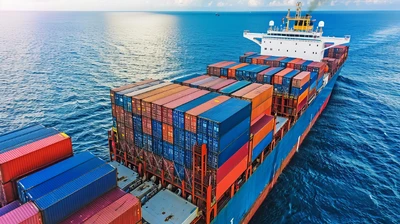
Tare weight is the weight of an empty container, vehicle, or packaging—without any cargo or goods inside. In shipping and logistics, it’s an essential measurement used to calculate the net weight of the cargo.
Think of it this way: if you're weighing a full container on a scale, you don’t just want to know the total—it’s the cargo weight that matters for customs, billing, and safety.
To get that, you subtract the tare weight from the gross weight.
| Term | Description |
Tare Weight | Weight of the empty container (e.g., 2,200 kg for a 20ft container) |
Gross Weight | Total weight (container + cargo) |
Net Weight | Actual weight of the cargo (Gross – Tare) |
Customs Declarations
You must report the correct net weight of goods—tare weight helps you calculate it accurately.
Freight Charges
Some pricing models (especially for air or LCL shipments) depend on weight. Knowing the tare weight ensures you aren’t overcharged.
Safety and Load Planning
Trucking, rail, and vessel operators need tare weight to manage axle loads and prevent overloading.
For shipping containers, the tare weight is stenciled on the container door—usually in kilograms and pounds.
 CUC Freight Insight Report: Turning 2025 U.S. Tariffs into Opportunities for Cross-Border GrowthMay 12, 2025Discover how POP mode and CUC Freight’s air logistics solutions, ocean container shipping, and cargo agent expertise help businesses navigate 2025 U.S. tariffs. Optimize costs with freight discount offers today!view
CUC Freight Insight Report: Turning 2025 U.S. Tariffs into Opportunities for Cross-Border GrowthMay 12, 2025Discover how POP mode and CUC Freight’s air logistics solutions, ocean container shipping, and cargo agent expertise help businesses navigate 2025 U.S. tariffs. Optimize costs with freight discount offers today!view Amazon and FedEx Rekindle Partnership to Fill UPS Delivery GapMay 19, 2025After a six-year hiatus, Amazon and FedEx have reunited, sparking buzz in the global logistics industry. With UPS scaling back its partnership with Amazon, FedEx has stepped in to fill the void, rejoi...view
Amazon and FedEx Rekindle Partnership to Fill UPS Delivery GapMay 19, 2025After a six-year hiatus, Amazon and FedEx have reunited, sparking buzz in the global logistics industry. With UPS scaling back its partnership with Amazon, FedEx has stepped in to fill the void, rejoi...view Raw Takeaways from Canton Fair 2025:How Global Buyers Can Beat Tariffs & Tap TrendsApril 28, 2025Navigating the 137th Canton Fair: Insights for Global Importers Amid U.S. Tariff Hikesview
Raw Takeaways from Canton Fair 2025:How Global Buyers Can Beat Tariffs & Tap TrendsApril 28, 2025Navigating the 137th Canton Fair: Insights for Global Importers Amid U.S. Tariff Hikesview Attention please! Shanghai Port is closed due to heavy fog | Shipping company issues delay noticeApril 22, 2024Affected by the humid and warm air flow, heavy fog occurred in the areas along the Yangtze River Estuary in Shanghai on April 15. The visibility in the waters of the Yangtze River Estuary was less tha...view
Attention please! Shanghai Port is closed due to heavy fog | Shipping company issues delay noticeApril 22, 2024Affected by the humid and warm air flow, heavy fog occurred in the areas along the Yangtze River Estuary in Shanghai on April 15. The visibility in the waters of the Yangtze River Estuary was less tha...view